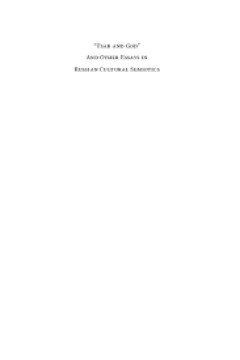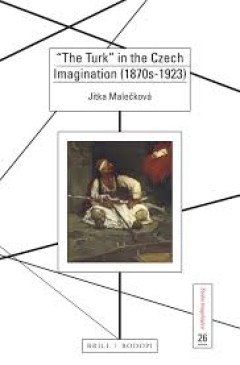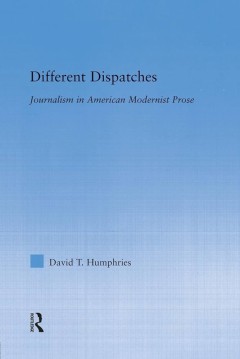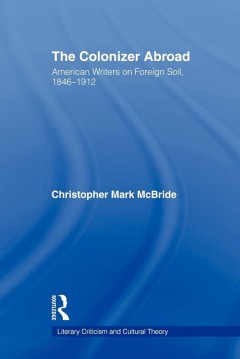Filter by

A "Labyrinth of Linkages" in Tolstoy's "Anna Karenina"
The renowned Russian writer Leo Tolstoy created a realistic masterpiece in Anna Karenina (1878). In the same work, moreover, he utilized allegory and symbol to an extent and at a level of sophistication unknown in his other works. In Browning’s study, the author identifies and analyzes previously unnoticed or only briefly mentioned “linkages and keystones” found in two highly developed cl…
- Edition
- -
- ISBN/ISSN
- 9781936235476;9781618116796
- Collation
- -
- Series Title
- -
- Call Number
- -

Abraham in Jewish and Early Christian Literature
The figure of Abraham has been extensively discussed in Jewish and Early Christian Literature. This collection of essays follows the impact of Abraham across biblical texts, including the Pseudigrapha and Apocrypha into early Greek, Latin and Gnostic literature. The essays also turn a spotlight onto those Abrahamic texts that have yet to receive scholarly attention.
- Edition
- -
- ISBN/ISSN
- 9780567675521
- Collation
- oer.unej.ac.id
- Series Title
- -
- Call Number
- Criticism and exegesis of sacred texts

“Tsar and God”: and Other Essays in Russian Cultural Semiotics
Featuring a number of distinguished essays by internationally known Russian cultural historians Boris Uspenskij and Victor Zhivov, this collection encompasses various ground-breaking works appearing in English for the first time. Focusing on several of the most interesting and problematic aspects of Russia’s cultural development, these essays examine the survival and reconceptualization of Ru…
- Edition
- -
- ISBN/ISSN
- 9781618116703
- Collation
- -
- Series Title
- -
- Call Number
- -

“The Turk” in the Czech Imagination (1870s-1923)
In “The Turk” in the Czech Imagination (1870s-1923), Jitka Malecˇková describes Czechs’ views of the Turks in the last half century of the existence of the Ottoman Empire and how they were influenced by ideas and trends in other countries, including the European fascination with the Orient, images of “the Turk,” contemporary scholarship, and racial theories. The Czechs were not free…
- Edition
- -
- ISBN/ISSN
- -
- Collation
- -
- Series Title
- -
- Call Number
- -

Women Writing Intimate Spaces = The Long Nineteenth Century at the Fringes of…
The messy and multi-layered issue of intimacy in connection with transnationality and spatiality is the topic of this volume on women’s writing in the long nineteenth century. A series of intimacies are dealt with through case studies from a wide range of countries situated on the European fringes. Within the field of feminist literary studies, the volume thus differs from other publications …
- Edition
- -
- ISBN/ISSN
- 9789004527454
- Collation
- 236 hlm; ill., lamp.,
- Series Title
- Women Writers in History, Volume: 5
- Call Number
- -

The Routledge handbook of refugee narratives
- Edition
- -
- ISBN/ISSN
- 9781003131458
- Collation
- -
- Series Title
- -
- Call Number
- -
- Edition
- -
- ISBN/ISSN
- 9781003131458
- Collation
- -
- Series Title
- -
- Call Number
- -

Different Dispatches : Journalism in American Modernist Prose
In "Different Dispatches", David Humphries brings together in a new way a diverse group of well-known American writers of the inter-war period including: Willa Cather, Sherwood Anderson, Ernest Hemmingway, Zora Neale Hurston, James Agee and Robert Penn Warren. He demonstrates how these writers engage journalism in creating innovative texts that address mass culture as well as underlying cultura…
- Edition
- -
- ISBN/ISSN
- 9780203959848
- Collation
- 258 halaman
- Series Title
- -
- Call Number
- 070 HUM d

Wittgenstein's Novels
Analyzing features of Wittgenstein's philosophical work and including in-depth textual analyses, this study investigates the impact of Ludwig Wittgenstein's work on contemporary German and French novelists. Drawing upon aesthetics, architectural history, philosophy of science, and photography, the book seeks to explain why references both to Wittgenstein as a person, as well as to his work are …
- Edition
- -
- ISBN/ISSN
- 9780203959152
- Collation
- -
- Series Title
- -
- Call Number
- -

Keeping up Her Geography : Women's Writing and Geocultural Space in Early Twe…
Recently, literary critics and some historians have argued that to use the language of separate spheres is to "mistake fiction for reality." However, the tendency in this criticism is to ignore the work of feminist political theorists who argue that a range of ideologies of the public and private consistently work to mask gender inequalities. In Keeping Up Her Geography, Tanya Ann Kenedy argues…
- Edition
- 1st Edition
- ISBN/ISSN
- 9780203944493
- Collation
- 190 halaman
- Series Title
- -
- Call Number
- 900 KEN k

The Colonizer Abroad: Island Representations in American Prose from Herman Me…
Looking at a diverse series of authors--Herman Melville, Richard Henry Dana, Jr., Mark Twain, Charles Warren Stoddard, and Jack London--"The Colonizer Abroad" claims that as the U.S. emerged as a colonial power in the nineteenth and twentieth centuries, the literature of the sea became a literature of imperialism. This book applies postcolonial theory to the travel writing of some of America's …
- Edition
- 1st Edition
- ISBN/ISSN
- 9780203494400
- Collation
- -
- Series Title
- -
- Call Number
- 800 MCB c
 Computer Science, Information & General Works
Computer Science, Information & General Works  Philosophy & Psychology
Philosophy & Psychology  Religion
Religion  Social Sciences
Social Sciences  Language
Language  Pure Science
Pure Science  Applied Sciences
Applied Sciences  Art & Recreation
Art & Recreation  Literature
Literature  History & Geography
History & Geography